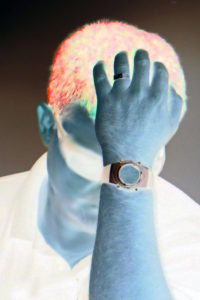Children’s Migraine – What are they?
Children’s Migraine
As a Specialist Physiotherapist, I see children, adolescents, and adults with headaches to assist with diagnosis. As there is no test for these common headaches we use the story you give me to discover information that will help classify your, or your child’s, headache. We will discuss how and when the headaches occur, and details about patterns and duration of the headache, and any known triggers.
The most common headaches are Migraine, Cervico-genic (neck related) headache and Chronic Tension Type headache. They all have distinctive, although at times, overlapping patterns which help identify the type of headache.
Only when we have a diagnosis can we discuss and choose the optimal treatment. Using a diary to monitor the frequency and duration of headache will help identify patterns and later assist analysis of medication outcomes and other management approaches we instigate.
What is a migraine?
Migraine is a moderate to severe headache often felt on one side of the head. Some children get migraines every now and then, while others get them more than once a week. About six in every 100 people get
About six in every 100 people get migraine with often a family or genetic link.
Children’s Migraine is painful and annoying, but it is not usually a serious problem.
About half of children who get migraines will continue to have them when they are adults. They happen equally between genders in children but are more frequent in adolescent girls.
The mechanism of what causes migraine is still unclear, but the blood vessels of the head and neck spasm (shake) or become narrow (constrict). Minutes to hours later, the blood vessels then enlarge (dilate) and are filled with blood which increases pressure in the skull and a headache develops. The central nervous system is in a state of hypersensitivity leading to extra symptoms other than pain.
Signs and symptoms of Children’s Migraine
A migraine headache may be:
- Dull or throbbing
- All over or worse on the sides of the head
- On only one side of the head
- The headache commonly lasts six to 12 hours.
Your child may also:
- Have loss of appetite and feel sick or vomiting
- Look pale and feel tired
- Complain of stomach pain
There is no test for migraine. A diagnosis depends on listening to the story and examining your child to exclude other possible pathologies.
Other test may be requested to rule out rare but sinister diagnoses.
Triggers for Children’s Migraine
Many things can trigger or start migraine headaches and include:
- Being over-tired
- Bright lights and loud noises (although these can also be symptoms)
- Relaxation after physical or mental stress – a “let down” effect
- Ongoing increased muscle tension and anxiety
- Missing meals and active or passive smoking
- Caffeine (in coffee, energy drinks and some medicines)
- Menstrual periods and for girls – using oral contraceptives (the pill)
In a few children, food triggers a migraine but current thinking suggests that these are instead cravings when the Migraine starts.
- Food with tyramine (e.g. Red wine, aged cheese, smoked fish, chicken livers, figs, some beans), processed, fermented, pickled, or marinated food and meats with nitrates (e.g. Bacon, hot dogs, salami)
- Chocolate and nuts
- Fruits (especially avocado, banana, citrus fruit)
- Dairy products (milk, yoghurt, cheese)
- Foods containing monosodium glutamate (MSG)
- Changing the diet rarely helps.
Treatment of Children’s Migraine
- The goals are to control your child’s symptoms and reduce further migraines as there is no cure.
- Try to minimise triggers if possible.
- Medications are most useful at the beginning of a migraine to manage pain.
- Give a recommended dose of medication early at first sign of a Migraine.
- Preventative medication may help frequent migraine headaches. Discuss options with your doctor.
Care at home
- Organise regular meals and sleep patterns
- Manage anxiety or stress early
- Be aware of tiredness and moods
During a migraine
- Rest in a quiet, dark room
- Paracetamol (Panadol or anti-inflamatories etc)
- Additive therapy including relaxation techniques, ice or heat and calm information to reduce fear
Key points to remember
- Migraine headache is painful and annoying at the time, but does not cause a serious problems
- Treatment is about management not cure
- Recognising triggers allows early treatment
Adapted by Helen Potter FACP In Touch Physiotherapy (from Royal Childrens Hospital Melbourne and Healthshare 2016)




